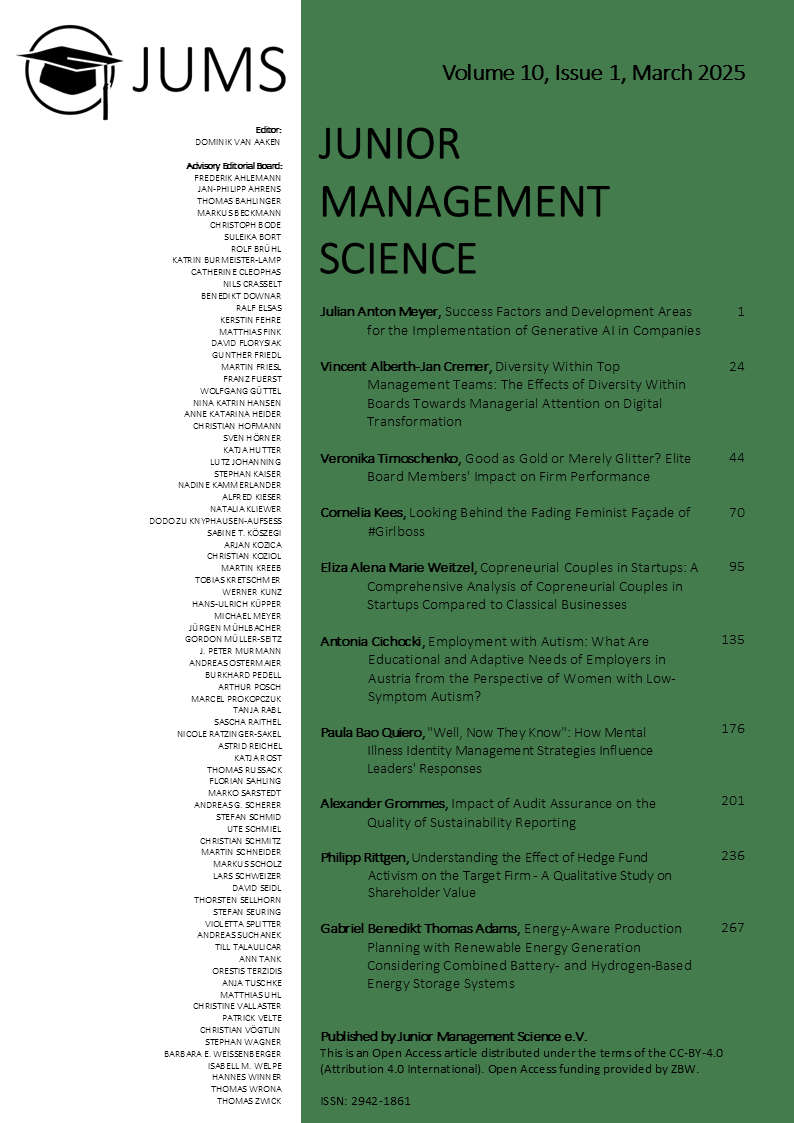Abstract
Digital transformation (DT) is crucial for firms to stay competitive, yet few fully embrace it. DT goes beyond moving from analogue to digital; it necessitates a complete restructuring of business models, including customer experiences and internal structures. Leadership significantly impacts strategic decision-making, as Hambrick (2007) notes. A board’s diversity and composition affect a firm’s decisions. Diversity in TMT can enhance innovation and creativity or increase friction and conflicts. While much research exists on these topics, examining managerial focus on DT and TMT diversity using Harrison and Klein’s (2007) framework is new. As DT becomes more important, firms must understand TMT diversity’s role. I argue that top management’s demographic characteristics are positively influenced by diverse education, tenure, and network, with a negative moderating effect of age and gender heterogeneity. This study found that in cumulative DT efforts, there are effects between age and tenure, and gender and network. Age separation decreases tenure’s positive effect, and gender separation diminishes the positive effect of diverse networks, suggesting inconsistencies with Hambrick’s (2007) theory.
Keywords: Blue’s Index; digital transformation; diversity; top management teams; Upper Echelon Theory

Dieses Werk steht unter der Lizenz Creative Commons Namensnennung 4.0 International.
Copyright (c) 2025 Vincent Alberth-Jan Cremer

